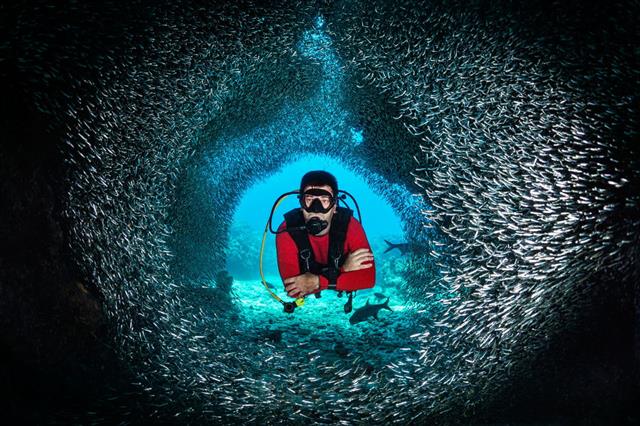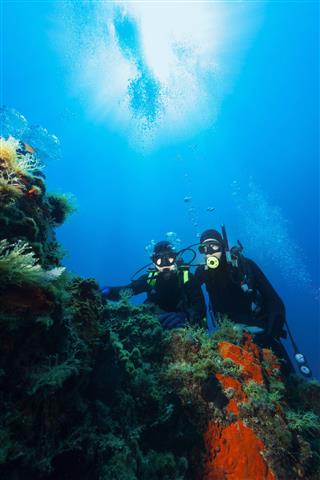
The mysteries of the underwater realms have fascinated mankind for more than a hundred years, and therefore man has tried to explore these realms through various means – the latest venture being scuba diving.
Scuba diving is a form of underwater diving, wherein the divers use a scuba set to breathe, while exploring the fascinating world beneath the surface of the water. Around two-third of the planet is covered with water, hence, there is an ample scope for exploring this till now untouched world below the water surface. And scuba diving gives the opportunity to embark on this one-of-a-kind adventure.
Scuba Diving Facts
- The term SCUBA is an abbreviation for ‘self-contained underwater breathing apparatus’. It is usually used to refer to the in-line open-circuit equipment which facilitates the process of inhaling the compressed air and eventually exhaling into the water.
- In 1943, French seaman Jacques Cousteau invented the first self-contained underwater breathing apparatus (SCUBA), which was called the aqualung. Records suggest that Leonardo da Vinci had prepared a blueprint of such an equipment 300 years prior to the development of the aqualung.
- The wet suits worn by the scuba divers keeps them warm and also makes their body buoyant. Sometimes the divers wear fins on their feet, which help them to propel and change direction while traveling in the water. In more recent times, underwater vehicles have also been used for propelling.
- The regulator used by the underwater divers has 2 parts. The first part controls the pressure, while preventing the compressed air from shooting into the diver and inflating him. The second part is a valve which allows air to flow when the diver inhales, but automatically stops the flow when he exhales.
- Although it is considered one of the most dangerous activity in the world, millions of people successfully obtain scuba diving certifications around the world every year.
- The National Association of Underwater Instructors (NAUI), and the Professional Association of Diving Instructors (PADI) are the two premier organizations based in the United States which play a pivotal role in propagating safe scuba diving techniques.
- Scuba divers can’t determine the direction of sound, as beneath the surface of water sound travels five times faster than it does in air. On land we just have a split second to determine the direction of a sound, but under water even a split second is not enough.
- Richard Presley holds the world record for the longest deep dive. He stayed underwater in a deep module for 69 days and 19 minutes, a feat he accomplished in 1992, at Florida, United States.
- A condition called nitrogen narcosis affects scuba divers who venture below the depth of 30 meters. This intoxicating condition, which initially leads to hallucinations and unconsciousness, can eventually result in death.
- A large number of deep sea divers have lost their lives trying to set the world record for deep sea diving. While the limit for recreational scuba diving is 100 ft (30 meters), the same for absolute recreational diving is set at 130 ft (40 meters).
- Today, scuba diving is used in various fields, prominent ones being scientific, naval and recreational. Underwater tourism has received a major boost due to development of this activity.
Scuba diving has lately become one of the favorite recreational activity for many, and therefore a multi-million dollar industry. The rate at which its popularity is increasing, it can soon hit the billion or even trillion dollar mark. So if you haven’t yet experienced this underwater thrill, now is the time – but make sure that you do it under proper guidance.

















